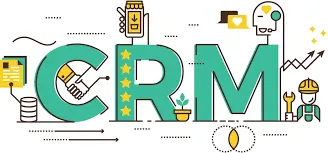As the SalesTech industry rapidly expands, more and more businesses are looking to find ways to automate their sales processes. But what is SalesTech, and how does it differ from Sales Automation and Sales Enablement?
Tech sales professionals are leveraging new tools to personalize interactions with unprecedented precision.
Sales automation is a subset of SalesTech that deals with automating repetitive and mundane tasks in the sales process.
Sales enablement, on the other hand, is the term used for tools and techniques that help empower sales reps to sell more effectively.
Finally, SalesTech refers to all technologies that help sales reps work more productively. In this blog post, we will explore each of these concepts in more detail!
What Is Sales Tech & How Is It Different from Sales Automation and Sales Enablement?

The last few years have seen an increase in popularity for terms such as sales automation, sales technology, and sales enablement. What is sales tech and how does it differ from sales automation and sales enablement?
Sales technology is a set of tools that helps salespeople use their time and customer knowledge as efficiently and effectively as possible by allowing them to automate repetitious and tedious tasks.
Sales automation, on the other hand, is a type of sales technology in which routine and monotonous activities may be automated for greater efficiency and more effective utilization of the employee's time.
The growth of Sales Enablement is a result of two main things:
- The popularity of sales tech as we recognize the power of content as a tool in B2B marketing and sales; and
- Our improved ability to use technology to assist with buyer engagement during the buying process.
The goal of sales enablement is to provide the right content at the right time in order for the sales force to assist engage and nurturing prospects through the buyer's journey.
Building an effective sales tech stack is crucial for businesses looking to automate and enhance their sales processes.
Sales tech is growing in terms of categories (i.e., tools and vendors), with a lot more to come, as evidenced by the number of software providers entering the market and consumers adopting various tools.
The most essential fundamental need is to know who to sell to and why.
- How to engage and when to do so?
- Why spend money and time on something that someone else can provide?
- How to cancel, up/cross-sell, and renew your subscription?
- How to handle, acquire, and enhance your skills?
Each type of sales tech solution represents a distinct need in the sales tech 'hierarchy of needs.' It's up to you to figure out what's most essential for you at any one moment!
Technology is changing the way sales professionals do business: new categories, more tools, and even more advancements are on the horizon.
15 Key Sales Tech Trends to Know

Let's look at some of the specifics behind these 10 sales tech 2025 trends:
1. AI-Powered Personalization Takes Center Stage
Imagine you walk into a store and the seller knows exactly what you want! That’s what AI in sales tech does.
It looks at what customers like you have enjoyed before and suggests products that you might like. This helps salespeople make sure they’re showing you things that are more likely to interest you.
Emerging sales opportunities in tech sales are tied to advancements in AI-driven tools that anticipate customer needs.
2. The sales technology sector is expanding at a rapid pace.
Since last year, the number of tools has risen by roughly 10%, and there are now 570 sales tools available under 43 categories.

Categorization is always the most challenging part, and it's getting more difficult as many stand-alone solutions offer functionality on a path to becoming bigger platforms.”
3. Sales tech adoption is increasing: more tools are being employed by more sales teams.
Sales stacks are made up of four pillars, each of which is used by a significant number of businesses. Our 2017 study identified four pillars of the sales stack, that is, four solutions used by a clear margin above the rest.
They were as follows: CRM, Online meetings, Lead list/database, and eSignatures "Sales intelligence" was the fourth most popular category, accounting for approximately 20% of respondents.
"Customer relationship management" and "CRM/contact center software" were the fifth and sixth most common categories, respectively, with about 18% of respondents each. The remaining 22 solution types that we polled only accounted for around 22% of users.
However, in 2019, 47% or more of respondents are using 10 solutions or more. Perhaps even more telling is the fact that all but 5 options were used by at least 22 percent of survey participants."
4. Spending on sales-related technology is growing by the month for each user.

Nancy was most surprised by the rise in per-user monthly spending, according to the survey. “In 2017, two out of three respondents spent $150 or less per user each month. In 2019, that reversed itself.
Two-thirds of respondents now spend $150 or more each user every month, clearly seeing greater value in the investment and ensuring that more employees within the company have access to these tools to increase productivity”.
5. Integration of Sales and Marketing Technologies
Think about your favorite game and how it lets you share scores on social media. Sales and marketing technologies work together like that.
They share information to help businesses understand what you like and don’t like. This means they can create ads and products that are more exciting and relevant to you.
Sales and marketing alignment is achieved through sophisticated tech tools that ensure seamless communication and data sharing.
A tech sales representative today uses a variety of software solutions to streamline every part of the sales funnel.
6. CRM is still a problem for users.
Even though CRM is the most common or deployed sales technology tool among the majority of respondents, it continues to sit at the bottom of the satisfaction and perceived value rankings.

Even though no tools were judged to have a score below 7, 22 other categories were chosen ahead of CRM in these criteria. However, people are frustrated with CRM. They have great expectations for it, but when they get there, they discover that things aren't so simple.
Awareness of your competition is the first step toward determining who you want to keep up with. Some CRM solutions, for example, require customization if they are to be genuinely beneficial for each distinct firm.
AloreCRM is a particularly strong CRM solution, but it comes with complexity. To drive the point home, performing a LinkedIn search for individuals with CRM administrators in their title returned 445000 results
The tech sales industry's growth is driven by continuous innovation in CRM and predictive analytics tools.
Retaining existing clients in today's competitive market requires tech sales teams to leverage tools that offer exceptional personalization and service.
7. Conversational AI for Enhanced Customer Engagement
Have you ever talked to Siri or Alexa? Conversational AI is like having Siri to help you when you’re shopping online. It can answer questions, help you find things, and even make suggestions. It’s like having a helpful robot friend to chat with while you shop!
These sales tech tools are not just cool; they help businesses understand and serve you better, making shopping easier and more fun.
They're also really smart, using information and technology to make sure every shopper finds just what they need. Isn’t it great how tech can do that?
8. Growth in the use of top-of-funnel sales technology tools.
A focus on top-of-the-funnel tools implies a focus on ‘nurturing'” a prospect deliberately, interacting with them during their journey beginning at the top.
Marketing organizations have a significant portion of the sales tool budget and begin with tools that connect marketing activities to the sales funnel.
As a result, increasing at the top of the funnel makes sense. Sales leaders like top-of-funnel because you can't close deals that haven't entered the pipeline incorrectly. It's an obvious place to start."
9. ‘Social selling' has found its niche, moving up to the top 5 of ‘top-of-funnel' tools.
Social selling was mentioned a lot several years ago, but it never quite became as popular or institutionalized in the sales organization as many people had hoped.
Getting prospects to respond to salespeople is more difficult than ever. You have six times the number of SDRs who can make 10 calls.
10. Account targeting is also on the rise.
From 2017 to 2019, the proportion of marketers using account targeting technologies grew by 1175%, from 4% to 51%. This was the most substantial increase seen in our research. Why has this area grown and what factors are contributing to the expansion?
Prioritizing sales efforts has always included separating leads into target markets (for business B2B sellers) but it's usually done as a static spreadsheet that salespeople refer to once in a while .
The increase in usage is probably due to the fact that purchase intent data has become available, as well as creative solution improvements at businesses.
Technology sales are becoming more sophisticated with tools that allow for better targeting and segmentation of potential clients.
11. The growing acknowledgment of content as a driver of interaction, backed by the rise in sales enablement tools.
Sales enablement tools, which help manage and leverage content to engage and convert prospects (especially in the B2B context) grew by 5X.
What does that say about the use of the content, the larger enabling environment around content creation and personalization of content experiences, and sales embracing content as a real way to drive value in the consideration phase?
Marketing organizations have paved the way. They are well aware that content is queen. It's also an extremely expensive process. If the material isn't "findable," "trackable," or "measurable," it's of questionable value.
That implies it's unknown. There's also a lot of pressure to be more relevant to each buyer persona due to the difficulties of getting buyers to interact with your company.
12. Mobile Sales Enablement on the Rise
Have you ever used your phone or tablet to do something important? Well, many salespeople do that too!
They use mobile devices to keep track of their work, talk to customers, and even close deals right from their phones. This trend is called Mobile Sales Enablement. It makes it super easy for sales teams to work from anywhere, anytime. Isn't that cool?
Every tech sales rep must adapt to using mobile sales enablement tools to stay productive from any location. Sales tech tools help keep existing customers engaged through automated follow-ups and personalized content.
13. Advanced Analytics for Smarter Decisions
Imagine if you had a super smart helper that could tell you the best time to do your homework to get the best grades. Advanced analytics in sales tech works kind of like that helper.
It looks at lots of information and helps salespeople decide the best time to talk to customers and what to say. This smart tool helps make sure that they can help customers better and faster, making everyone happy.
Tech sales positions are evolving, with a significant focus on using data-driven insights to enhance sales strategies.
14. Demand generation continues to outpace value creation and retention.
When it comes to sales technology spending, top-of-funnel (TOFU) tools come first, followed by middle-of-funnel (MOFU) and bottom-of-funnel (BOFU) technologies.
Despite everything we hear about the need to retain, engage, and optimize lifetime value through the creation of value, does this imply that the emphasis stays on TOFU and lead/demand gen above conversions, value generation, and retention?
The vast majority of marketing organizations have a poor track record in growing revenues, and their focus on new business and the formation of a new pipeline is to blame.
I believe that as profitability rises to equal importance with booked revenue, the need to optimize customer lifetime value will become more apparent among marketing & sales professionals.
15. Sales performance management and reporting solutions are still finding their stride.

When looking at which management and reporting tools are used by firms with a high increase in conversions. We discovered that close to 40% of respondents don't utilize any management and reporting tools that assist them in approaching conversion and retention more strategically.
Despite the fact that all four categories of management and reporting software saw excellent growth, and ‘renewal/revenue management' witnessed a 6X rise. What can we infer from this about company leadership?
Despite the fact that sales operations and sales executives still rely on their CRM system's inherent capabilities to deliver the reports they require, they have created makeshift reporting using CRM and spreadsheets.
As well, it's difficult to break away from one's familiar surroundings.
How Tech is Reshaping Buyer-Seller Dynamics

1. AI-Driven Personalization
Have you ever wondered how websites seem to know exactly what you like? That's because of something called AI-driven personalization.
AI, or artificial intelligence, helps companies understand what each customer enjoys by looking at what they have liked or bought before. This means that when you visit a website, it can show you products or ads that match your interests.
It's like having a smart assistant who remembers your choices to help make shopping easier and more fun for you!
2. Virtual and Augmented Reality (VR/AR)
Imagine putting on a special pair of glasses and suddenly seeing a toy or a piece of furniture right in your room, even though it’s not really there. That’s what VR (Virtual Reality) and AR (Augmented Reality) can do.
Stores are starting to use these cool tools to let you try things out at home before you buy them. You can see how something would look or work without having to go to the store or buy it first. It’s like playing a video game, but with real stuff you can buy!
3. Seamless Omnichannel Experiences
Have you ever started doing something on one device, like a tablet, and then switched to another, like a computer, and everything you did was right there waiting for you?
That's what we call a seamless omnichannel experience. It means no matter where you start your shopping – on a phone, on a computer, or in a store – you can finish it anywhere without any hassle.
This tech makes shopping super easy because everything works together perfectly, just like a team.
4. Self-Service Sales Models
Imagine being able to shop for your favorite toys or games all by yourself, from choosing what you want all the way to paying for it, without having to wait for anyone to help you. That's what self-service sales models do.
Thanks to technology, businesses are setting up ways for customers like you to pick, compare, and buy products on your own. This is super helpful because you can shop whenever you want, even late at night when stores are usually closed!
5. Predictive Analytics for Proactive Selling
Predictive analytics sounds like a fancy term, but it's really just a way for companies to use a magic crystal ball to see what customers might want in the future.
By looking at what you and others have liked or bought before, this smart tech guesses what you might like next. It helps sellers suggest just the right things to each customer, making shopping easier and more fun because you find what you need faster!
The tech industry is at the forefront of integrating advanced analytics into sales processes to predict customer behavior accurately.
Which is why pursuing a career in tech sales offers dynamic opportunities with the rise of AI and machine learning technologies.
6. Enhanced Trust Through Transparency
Trust is super important, right? Well, technology is helping businesses be more open about how they work.
For example, when you buy something, you can now easily find out where it came from, how it was made, and even how others feel about it.
This makes everyone feel safer and more confident about buying things because there are no secrets about what you’re getting. Protecting customer data is paramount, with tech sales tools increasingly focusing on security to enhance trust.
Tech companies are now investing more in secure and transparent technologies to build trust with consumers.
Conclusion
A sales career today is as much about tech savviness as it is about traditional selling skills. Securing a tech sales job now requires more than just basic sales skills; it requires a deep understanding of technology and data analytics.
Many tech sales jobs now require expertise in managing diverse software platforms to meet various customer engagement needs. Other tech sales professionals often collaborate using cloud-based platforms to share insights and strategies in real-time.
Many tech sales reps are transitioning to remote work models, utilizing digital tools to maintain productivity and client engagement.
Technology now influences the entire sales process, from initial contact through to post-sale support and data analysis.

.webp)



.jpg)

.jpg)
